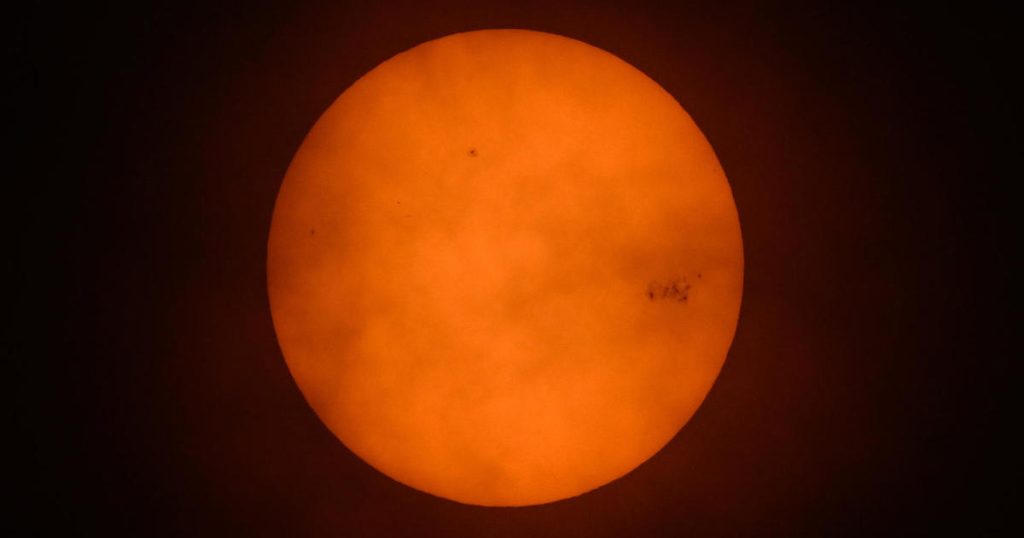A severe geomagnetic storm is expected to hit Earth this weekend, potentially knocking out power and electronics but also bringing a spectacular light show of the aurora borealis as far south as Alabama and Northern California. NOAA’s Space Weather Prediction Center issued a watch for a G4 storm, the second strongest on a scale from G1 to G5, in nearly 20 years, which was later upgraded to a G5 storm on Friday. The prediction center reported extreme geomagnetic conditions on Friday evening, the first time since October 2003, and these conditions could continue through the weekend.
During a G5 geomagnetic storm, there is a risk of widespread voltage control problems, damage to transformers, and complete blackouts to the power grid. These storms can impact near-Earth orbit infrastructure and Earth’s surface, disrupting communications, the electric power grid, navigation, radio, and satellite operations. Previous incidents have caused power outages in Sweden, transformer damage in South Africa, and equipment tripping and voltage stability issues in Canada. The last G5 storm in 2003 resulted in major power outages and infrastructure damage.
In addition to risks to the power grid, a G5 storm can also affect satellite and radio operations. High-frequency radio propagation may be impossible in many areas, satellite navigation could be degraded for days, and low-frequency radio navigation may be impacted for hours. Friday afternoon, NOAA had observed a moderate solar radiation storm that poses risks to people in high-flying aircraft and could cause issues with satellite operations. Radio blackouts have been detected, indicating wide blackouts of high-frequency radio communication and loss of radio contact for about an hour on the sunlit side of Earth.
One positive aspect of these geomagnetic storms is the expansion of the aurora borealis, or northern lights, which can be visible in areas where they are not normally seen. Earth’s magnetic field guides the electrons to form the aurora in ovals centered at the magnetic poles, expanding during major geomagnetic storms. Vivid displays were visible over parts of Europe and the UK on Friday night, and residents in dark, cloud-free, and unpolluted areas may have the chance to witness an impressive aurora display. Rob Steenburgh, a space scientist with NOAA’s Space Weather Prediction Center, emphasized that the aurora is a gift from space weather.
Overall, the G5 geomagnetic storm poses significant risks to power grids, satellite operations, and radio communications, but also offers the opportunity to witness a stunning natural phenomenon in the form of the aurora borealis. It is important for operators of these systems to take protective action to minimize the potential impacts of the storm. Monitoring by agencies like NOAA’s Space Weather Prediction Center is crucial for predicting and preparing for such events, ensuring the safety and functionality of critical infrastructure and services.


